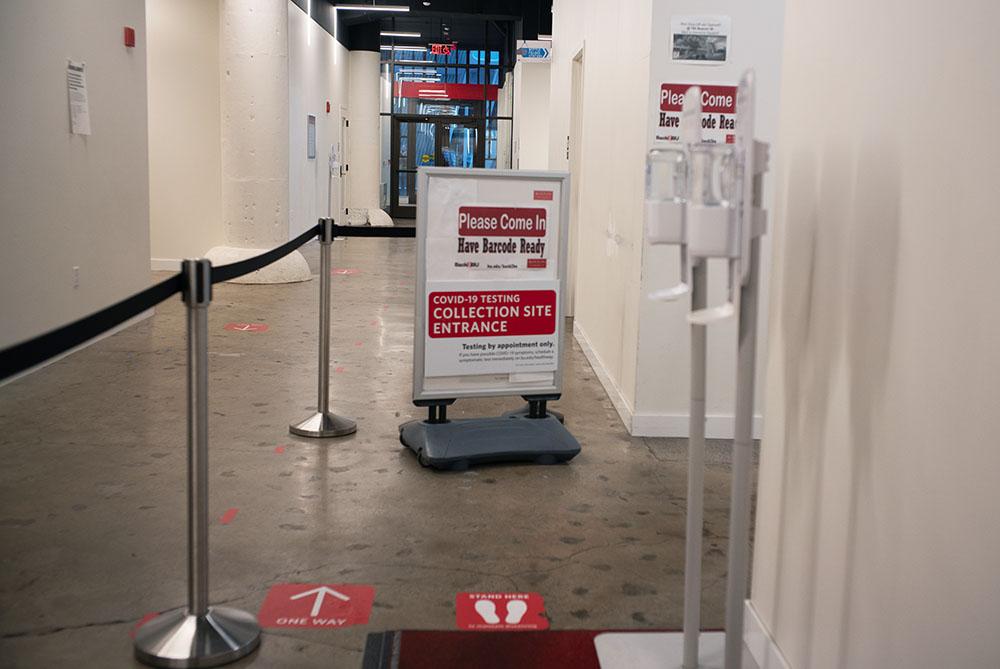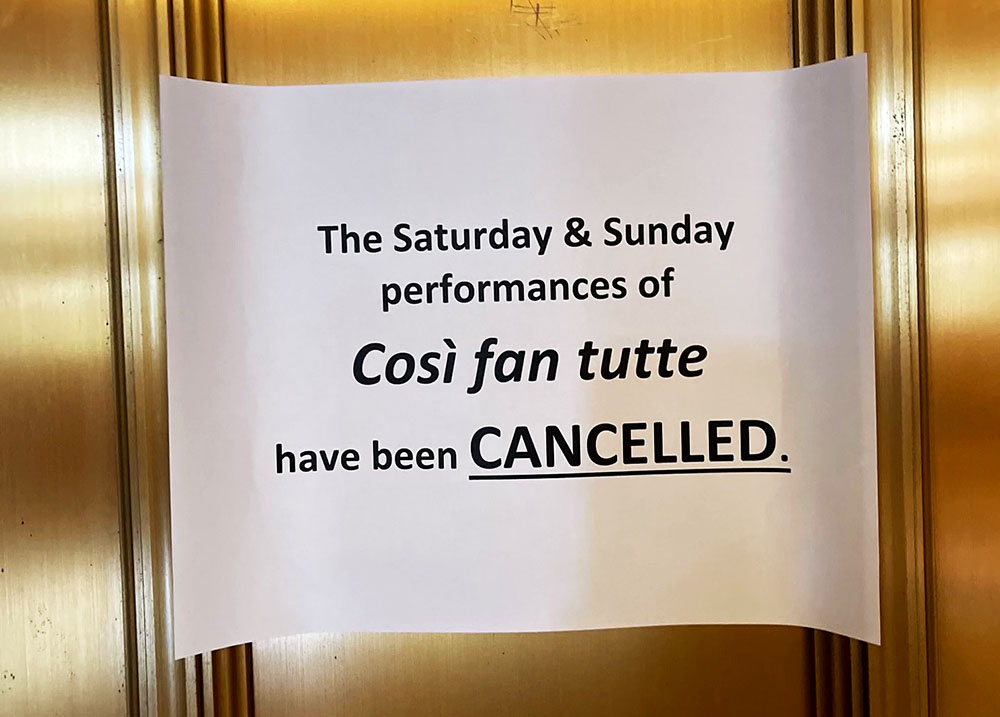The LGBTQ community is no stranger to death. The AIDS pandemic had ravaged the community in the 80s, resulting globally in more than three quarters of a million deaths. Now, a new pandemic is targeting marginalized groups.
Pride Month, which occurs in June, will be celebrated differently this year. Boston’s traditional Pride march, which drew a crowd of more than 1 million last year, has been canceled due to the COVID-19 pandemic.

This year would have been the parade’s 50th anniversary in Boston.
Debra Fowler, co-founder of History UnErased, an advocacy group that develops LGBTQ history curriculum for the classroom, said although the cancellation comes with great sadness, now is also the time for reflection and resilience.
“Everybody has something to come out about,” Fowler said. “That honesty and visibility can be revolutionary in how we live our lives.”
Pride is more than a celebration, but rather a way of life, Fowler said.
“It is purposeful and meaningful, especially in the 50th anniversary of the first commemoration of the Stonewall riots,” Fowler said. “That massive gathering galvanized the concept of coming out and being visible and being proud.”
Elle Smith, Gay, Lesbian & Straight Education Network’s 2019 student advocate of the year, said Pride cancellations across the country are disappointing, but ultimately the best for public safety.
“Pride is about being safe in being yourself,” Smith said. “So I don’t want to go to a Pride festival where I am worried about getting a disease.”
Smith, a rising freshman at Harvard University, said there will still be many opportunities to engage in Pride this month.
“All of the organizations who would have been pouring their time and resources into getting stuff together for Pride festivals right now are shifting to do things virtually,” Smith said. “I know pretty much everyone is offering a ton of webinars throughout the month of June.”
In a time of global crisis, Fowler said, it’s imperative to remember and learn from LGBTQ history even if there is no parade.
For the LGBTQ community, history is repeating itself, Fowler said. There are similarities between the current pandemic and the AIDS epidemic, including the recommended safety measures.
“Wearing a mask is comparable to, during the AIDS epidemic, promoting wearing a condom,” Fowler said. “This is how we protect others from what we may potentially be having.”
Similar to the AIDS epidemic, COVID-19 is also impacting historically discriminated groups more than others.
LGBTQ youth make up an estimated 7 percent of the youth population, but according to the Williams Institute at UCLA, between 20 and 45 percent of homeless youth identify as LGBTQ.
“The homeless population has very-little-to-none protections,” Fowler said. “And in the Black and Brown community of queer people, especially trans women, they have suffered as far as employment opportunities. So therefore, they’re suffering even more now.”
Smith said the LGBTQ community has been more severely impacted by the pandemic than more privileged groups.
“Just as a side effect of the fact that queer people are more likely to be homeless and more likely to be low income or work jobs that are considered essential now,” Smith said. “It’s just a direct result of years of systemic oppression.”
Tim Wang, senior policy analyst at Fenway Institute, a research, advocacy and education group for the LGBTQ community, wrote in an email that there are multiple health factors that could put the LGBTQ community more at risk.
Wang wrote that 65 percent of LGBTQ people have a chronic condition such as cardiovascular disease, cancer and HIV or AIDS. LGBTQ youth are more likely to have diabetes and older LGBTQ adults are more likely to have a disability. Those with HIV will have a weakened immune system.
“LGBTQ people are disproportionately burdened by various risk factors for contracting and dying from COVID-19,” Wang wrote.
LGBTQ people are also more likely to be on the frontlines during the COVID-19 crisis, Wang wrote. In 2018, an analysis by the General Social Survey found that 15 percent of LGBTQ adults in the U.S. worked in restaurants and food services and 4 percent worked in retail.
“LGBTQ suffer economic disparities that place many in living environments,” Wang wrote, “that may make it harder to maintain social distancing.”
The current pandemic has shone a light on the disparities many Americans face in equal access to help and resources, Wang wrote.
“I think that this pandemic has really exposed a lot of the flaws in our policies and systems that disproportionately leave low-income people and people of color at risk,” Wang wrote. “The lack of universal health care, the lack of protections for ‘essential’ workers, inadequate low-income housing, etc. are all problems that have been amplified by this crisis.”
Despite the similarities between the impact of both AIDS and COVID-19 on marginalized communities, Fowler said empathy and general knowledge within society has been more prevalent when it comes to COVID-19.
“When the AIDS epidemic reached 100,000 deaths, that was buried in the newspaper,” Fowler said. “Now [for coronavirus], it’s headlines.”
The lack of coverage and support of affected communities during the height of AIDS was likely due to misinformation, Fowler said.
“There was a lot of fear and misperception about how it was transmitted,” Fowler said. “Certain groups were vilified.”
The difference in the amount of resources put forth to cure both pandemics was a feat of discrimination, Smith said. AIDS was labeled with prejudice, limiting the quality and accessibility of health care, they said, but the response now has been “significantly more compassionate” than during the AIDS crisis.
“It was ‘gay-related immunodeficiency syndrome’ for the longest time and they didn’t work to find a solution,” Smith said. “Even when they did start finding treatment options, they weren’t working to make things readily available.”
Little was known initially of both diseases, Wang wrote, but a major difference was the government’s response.
“[Coronavrius] was acknowledged as a global pandemic and at least state governments took serious steps to stop the spread of it,” Wang wrote. “In contrast, the federal government ignored the AIDS epidemic as it ravaged communities for years because of the stigma surrounding AIDS as an exclusively ‘gay’ disease.”
Despite the absence of a physical celebration this year, Smith said Pride holds a great importance for the LGBTQ community regardless. A virtual Pride can still be effective and meaningful, they said.
“By choosing to be happy in the comfort of your own bedroom, I think you can celebrate Pride in a safe and socially distant way,” Smith said. “Pride is just about allowing yourself to exist and be free and you don’t necessarily need other people or a public gathering to do that.”
Pride is an opportunity for the LGBTQ community to be in the limelight, Fowler said. Given the disproportionate and significant impacts of COVID-19, visibility is important to highlight the struggles and triumphs of the community.
However, Fowler said, maintaining LGBTQ visibility and a sense of community does not have to depend on organized Pride celebrations.
“The concept of visibility is beyond just a day, but it’s in living your life,” Fowler said. “Of course, some are not safe to be visible in certain contexts, whether it’s a work environment or home environment even or church environment.”
But Smith said society is beyond needing to acknowledge the LGBTQ community’s existence. Rather, the next steps are to act toward inclusion and support for those who are in it.
LGBTQ individuals who reside in unsupportive communities, for example, will feel the brunt of the isolation this month.
“It’s going to impact the degree to which people are able to feel safe,” Smith said. “For some people, probably festivals are the one day a year where they can escape their home or their neighborhood or their city, and they can go and be around a whole bunch of people who understand their experience.”
In a time of social-distancing, Smith said, isolated members of the LGBTQ community need support.
“Checking in on those people seeing if they have any needs that you can meet, whether that be delivering a care package with a Pride flag, or just having a FaceTime call,” Smith said. “Right now what’s most important is going to be an individualized approach to community care.”
But despite the unexpected loss of an annual celebration, Fowler remains hopeful for the future.
“Here’s another challenge that is unifying us, all of us,” Fowler said. “The community has faced tremendous adversity in the past and continues to, but the strength lies in knowing that they’re not alone, that we’ll come out better, stronger ultimately and persist.”



























































































































